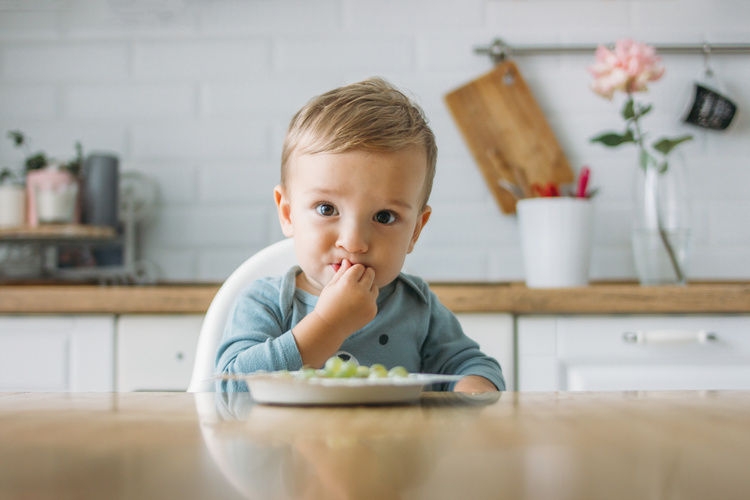Babies love putting things in their mouth, even (and especially) if it's not supposed to go in their mouth! It's important to know that anything smaller than the circumference of a 20c coin can become lodged in their windpipe. Part of babyproofing your home is making sure choking risks are addressed - here are some ways to reduce the risk of your little one choking as they get more adventurous.
Food
Encourage your little one to sit down to eat solid foods. Help them practise thorough chewing and mindful, slow eating. Supervising is always a good idea.
Avoid small or circular foods. Cut grapes or cherry tomatoes lengthwise into quarters, squash blueberries with a fork before serving, and cut sausages into long strips. Nuts can be a hazard, so wait until they are confident eaters before offering raw, whole nuts, demonstrate how to safely chew them, and supervise closely each time.
You can also get creative with how you prep your food - try mashing or grating harder foods such as carrot or apple to allow your baby to join in the fun of family mealtime more safely. For more info on starting solids with your baby, check out our handy guide.
Toys
Toys with removable parts can be dangerous for young children. Be mindful when choosing toys; could their eyes or ears fall off easily? Do they have moving parts, breakable parts, or brittle surfaces that could easily break off and be accidentally swallowed? Is the toy getting old and falling apart? Avoid toys with button batteries and check for any loose screws or buttons. Dispose of plastic wrapping, zip ties, or any packaging immediately.
Small objects
Keep anything small out of baby’s reach! Avoid leaving bags on the ground. Pick up anything you drop like a pen lid or button straight away. Assess your home frequently, and consider what is within your child’s reach; if it is small enough to swallow, move or remove the object. And don't forget to look at everything from your baby's perspective. What might be mundane or out of sight for you might be the most exciting thing your little one discovers.
Strings and cords
If you have blinds or curtains with strings, tape them high up the wall or wrap them up out of your baby’s reach. Avoid any clothing with drawstrings, or removable parts such as ribbons, buttons or sequins.
Teach safe from not safe
Point out which objects are safe and not safe to play with. As your baby gets older, they can begin to understand the difference and will slowly develop better judgement. Until then, be cautious about what objects your little one can access and keep a close eye on them when they are playing, eating or exploring.
How can I tell if my child is choking?
You may find that your child begins to gag on some foods, particularly when first switching to solids. If they retching, coughing or crying, they are getting air and their gag reflex is designed to help.If they are panicked, silent or wheezing, they are choking and need urgent support. For more information on gagging vs choking, check out this page by Solid Starts.



